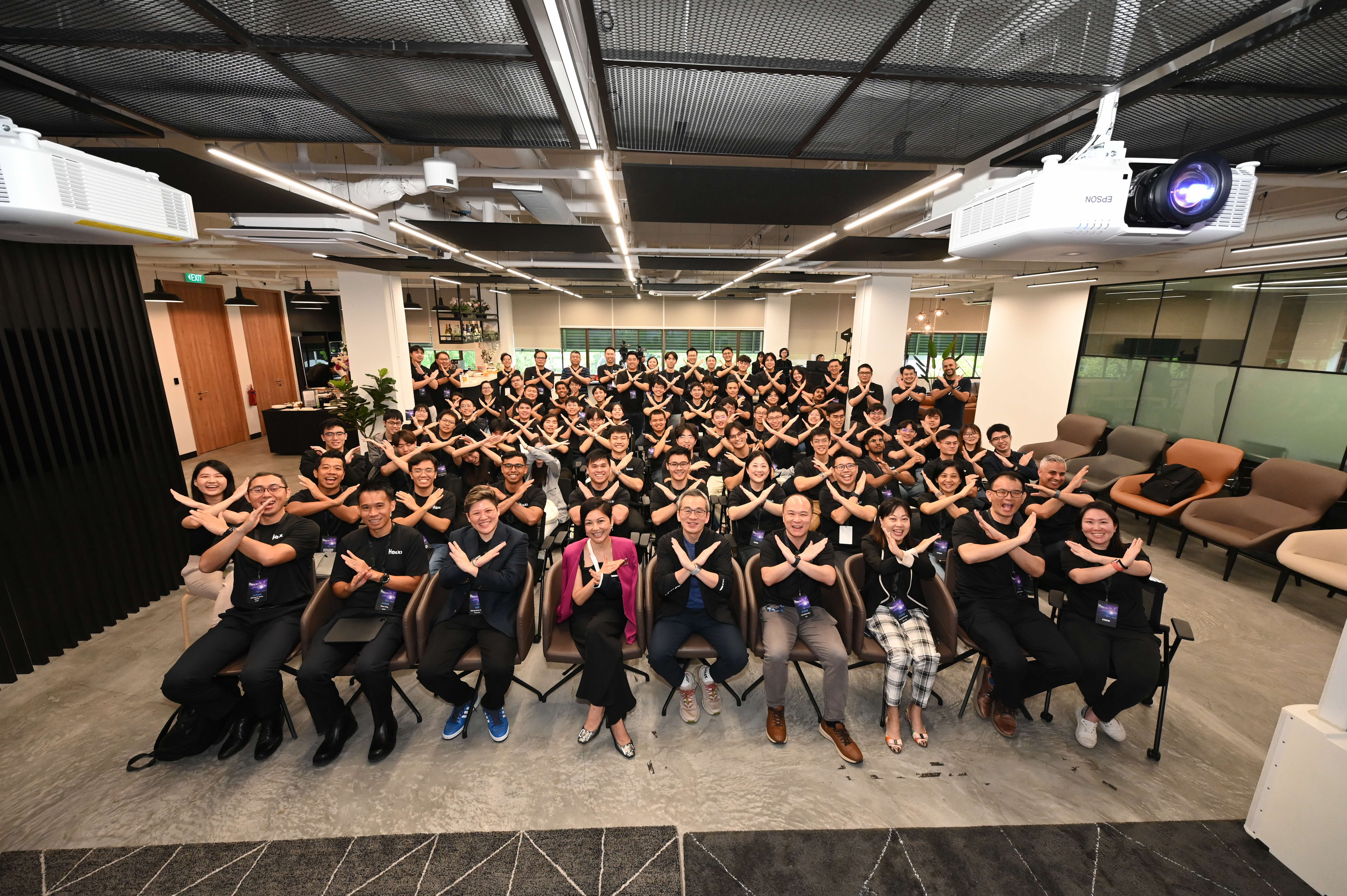As the second edition of HacX! reached its thrilling conclusion on 29 October 2024, the top teams faced off in a high-stakes final round.

(Photo: HTX)
The competition at this year’s HacX! finals was fierce, with 10 finalist teams competing for the grand prize of S$10,000. Organised in collaboration with Microsoft Singapore, HacX! is a hackathon that empowers students to use science, technology, and engineering to address pressing public safety challenges.
This year, HacX! aims to enable rapid prototyping for public safety challenges across three domains—enhancing our frontline’s safety, deterring and solving crimes, and safeguarding lives and properties.Among all teams that showcased innovative and thought-provoking solutions, one of them was a cut above the rest. DataDream Team wowed the audience and judges with EdgeGuard, which helped them clinch the grand prize.

DataDream team posing with their prize and EdgeGuard. (Photo: HTX)
EdgeGuard addresses the significant challenge faced by the Singapore Civil Defence Force’s (SCDF) Disaster Assistance and Rescue Team (DART) in reducing window frame damage caused by rope friction during rappelling missions. These operations involve DART members descending from heights to perform complex rescues
EdgeGuard is easy to deploy, as the officer simply has to place EdgeGuard at the edge of the rappelling point before fitting the rappelling rope securely into the guard and making their jump.
What makes EdgeGuard so special is its arc hinge, which is designed to reduce friction and minimise pressure between the rope and window frame. The damping effect of EdgeGuard (i.e. its ability to absorb force) also does double duty in ensuring that the officer does not experience an overly harsh or bouncy fall.
When asked about how they felt winning the grand prize, DataDream Team shared, “Like our team’s name, this feels like a dream to us. When we first entered this competition, we didn’t think of winning as we just wanted to help solve the Home Team’s problems.”
“Our solution only worked because of the many things we learnt over the course of the hackathon. For example, even though none of us were trained in conducting simulations, we learnt how to conduct static and structural simulations to refine our solution,” they added.
While DataDream Team clinched the top prize, the second and third place innovations were impressive as well.
Coming in second place, REAct also created a solution to help reduce property damage during DART team’s rappelling operations. Through extensive research, REAct found that most property damage during these operations occurs at the window railing, which consists of many protrusions.

Can you spot the NoodleGuard? Hint: It’s clipped on REAct’s prize. (Photo: HTX)
That is why they created NoodleGuard—which contains pool noodles!
Why did they use pool noodles? That is because pool noodles contain foam that helps dissipate force across the window railing’s protrusions. NoodleGuard also consists of a curved main body, which encases the pool noodle cushioning and distributes the force of the rope onto the pool noodle.
Like DataDream Team, REAct shared that they developed many new skills during the hackathon.
“As computer science students, we’re naturally very software focused. However, since the challenge statement given to us was hardware focused, we set forth on learning more about hardware skills from our peers,” they said.
In third place, Group 12 tackled a different challenge statement—one aimed at helping police officers investigate high-rise littering incidents.

Group 12 eagerly received their prize. (Photo: HTX)
By leveraging physics, statistics and artificial intelligence (AI), Group 12 has created the PinPoint application, which allows police officers to trace the origin of high-rise litter based on its landing point.
To use PinPoint, one just needs to key in the object's distance from the building, the type of object thrown, as well as the wind speed for optimised accuracy.
Through calculations, PinPoint then generates a heat map highlighting the likely location of the object’s origin, visually guiding officers to potential throw sites within a building, which helps them apprehend potential suspects faster.
“What we really appreciated about HacX! was what it taught us about considering the needs of our target audience. In this case, it was considering the needs of police officers. This was initially difficult for us as our background is in pure hard physics, so we struggled in translating STEM concepts into something that could help the officers. But when we attended the pitching workshop sponsored by HTX, we learnt how to tailor these concepts to fit in the officers’ existing workflows,” Group 12 shared.